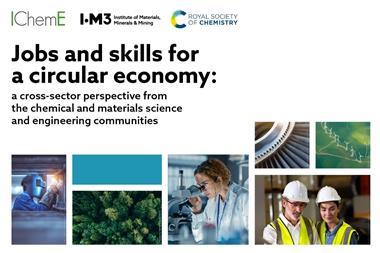The world is facing increasingly severe impacts of climate change: rising temperatures, extreme weather events and even inflation. India is a key stakeholder in tackling the urgent global challenge of climate change as it strives to combat climate change while balancing its growth and development goals. India is committed to achieving net-zero emissions by 2070 and has set ambitious interim targets for 2030, including reaching 500GW of non-fossil energy capacity, ensuring 50% of cumulative electric capacity comes from non-fossil sources, reducing carbon intensity by 45% compared to 2005 levels, and cutting projected carbon emissions by 1 billion tonnes.
Priority sectors
Innovative technologies are crucial for accelerating decarbonisation, particularly in key emission intensive sectors such as energy systems, built environment, industrial processes and transportation. Chemistry has important roles to play here including developing low-emission materials and processes, increasing efficiency of energy transfer and storage and decarbonising agriculture practices with carbon sequestration. As the fundamental science of matter and its transformation, chemistry has immense potential to be a catalyst in the path to net zero.1
India is the world’s third-largest energy and electricity consumer. As the country continues to expand, transforming its energy sector towards more sustainable sources is vital for ensuring a resilient energy future. Currently, fossil fuels account for 86% of the country’s energy needs2 and 76% of its electricity production. India is therefore focusing on three key areas of its energy transition: increasing renewable energy capacity, improving energy efficiency, and electrifying processes to shift from fossil-based energy sources to renewable electricity or green hydrogen, such as moving from ICE (internal combustion engine) vehicles to EVs (electric vehicles) or using green hydrogen in steel manufacturing.
India now boasts the largest electric 3-wheeler market in the world
Innovation will play a crucial role with technologies such as improving battery storage to enable round-the-clock renewable energy, designing materials that reduce energy loss in transmission or that offer improved heat insulation, recovery, and transfer, and in developing processes that reduce emissions in hard-to-abate sectors like cement, aluminum, steel, refining and chemicals manufacturing.
Transportation
In India, multiple policies have been implemented to accelerate adoption of EVs, including production-linked incentives for manufacturers, tax cuts and incentives under the FAME (Faster Adoption and Manufacturing of Electric Vehicles) scheme for consumers, and stringent Corporate Average Fuel Efficiency (CAFE) norms for automakers. Projections indicate that 40–45% of 2-wheelers, 15–20% of 4-wheelers and an even higher share of 3-wheelers will be electric by 2030. India now boasts the largest electric 3-wheeler market in the world.
However, the transition to EVs significantly increases the demand for critical minerals. While conventional ICE cars require ~40kg of minerals per vehicle (mainly copper and manganese), EVs use >200 kg including not only copper and manganese, but also nickel, graphite, and other essential materials whose extraction and processing are highly carbon intensive.3
The long-term goal for the auto sector should be to adopt complete circularity
With the transition to EVs, embedded emissions (Scope 3, Category 1 – Product purchase emissions) for the auto sector will increase significantly. To address this, innovation in battery technology is needed for high energy density, low-emission batteries made with abundant materials. Technologies to enhance extraction, refining and recovery of minerals, and to increase recyclability of materials such as rubber and polymers will together help address embedded emissions. The long-term goal for the auto sector, particularly with transition to EVs should be to adopt complete circularity and chemistry will be the key enabler to make this economically viable.
Built environment
Globally, built environment accounts for ~40% of energy-related emissions, with the majority stemming from building operations.2 In India, the construction sector is responsible for ~20% of emissions and over 30% of energy consumption.4 The country is still building much of the infrastructure required for 2050, so there is an opportunity to create building that use low emissions material and prioritise energy efficiency, both via passive and active measures.
The path to net-zero is a complex and multifaceted challenge that demands coordinated effort
For instance, insulation materials and reflective coatings, particularly for external facing walls and roofs enhance a building’s thermal resistance, and lowers the demand for heating or air conditioning systems, leading to significant energy savings. Similarly, careful development and selection of low emissions construction materials can reduce the embedded footprint of construction activities, for example using ground granulated blast furnace slag as an additive to concrete.
Carbon sequestration
While these measures can help mitigate future carbon emissions, achieving net-zero also requires the sequestration of existing carbon from the atmosphere. Carbon Capture, Utilisation, and Storage (CCUS) can play a crucial role in decarbonising hard-to-abate sectors. In the cement industry, CCUS has the potential to reduce significant process-related emissions from clinker production, which accounts for about 60% of the sector’s CO2 emissions.
Advances in chemistry and materials science are crucial in enhancing capture efficiency, creating more effective carbon conversion catalysts and ensuring safe and long-term storage. This in turn will lead to commercially viable CCUS technologies. CCUS has the potential to become a cornerstone of India’s strategy for achieving its net-zero targets.
Conclusion
The path to achieving net-zero emissions is a complex and multifaceted challenge that demands coordinated efforts across various sectors, along with the emergence of technologies. Increased collaboration between policymakers, industry leaders, and the scientific community will be essential to ensure an accelerated journey to net zero for India and the world.
References
1 S A Matlin, G Mehta, S E Cornell, A Krief and H Hopf, RSC Sustain., 2023, 1, 1704 (DOI: 10.1039/D3SU00125C)
2 India Energy Outlook 2021, IEA, Paris
3 The Role of Critical Minerals in Clean Energy Transitions, IEA, Paris

Chemistry will support India’s sustainability ambitions
- 1
- 2
- 3
 Currently reading
Currently readingHow can chemistry help developing countries decarbonise their economies?
- 4
- 5
- 6
- 7
- 8
- 9
- 10
- 11
- 12
























No comments yet